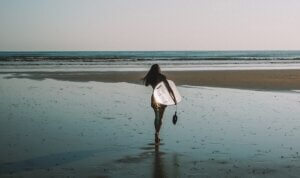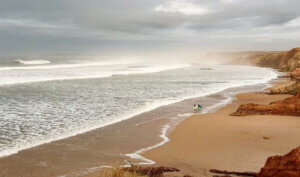Shortboards looks cool. Those foamy beginner boards, on the other hand, they look like plastic freight boats. So, when you are dreaming of becoming a surfer, it is easy to start wondering if you can learn to surf on a shortboard?
Why not cut straight to the good part? After all, you are athletic and determined and probably going to turn out to be a natural in the fine art of surfing.
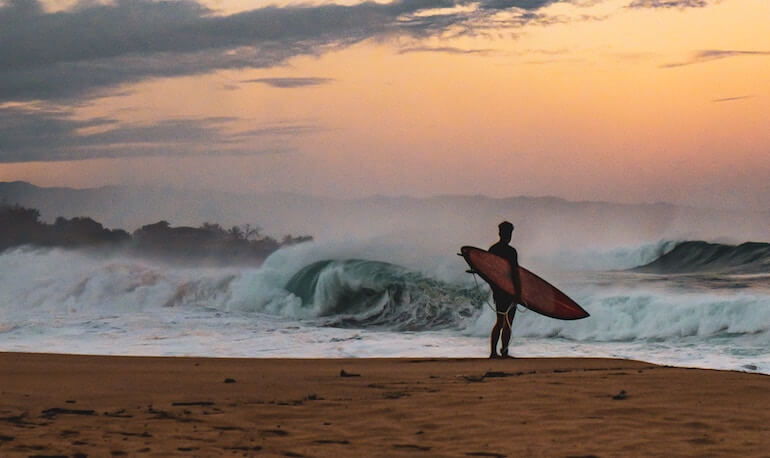
- 1 Learning to surf on a shortboard
- 2 You need to be incredibly fit
- 3 Surfing looks easy
- 4 Why surfing is difficult
- 5 5 Pros with learning to surf on a short board
- 6 5 Cons with learning to surf on a shortboard
- 7 Still determined to do it? Let’s take a look at how it is done – 7 top tips to learn to surf on a shortboard
- 8 1. Choose a board with lots of volume
- 9 2. Go to the break all the time
- 10 3. Learn to read the ocean
- 11 4. Study the art of surfing
- 12 5. Ask other surfers for tips
- 13 6. Practice balancing on the board
- 14 7. Paddle the correct way
- 15 8. Master the art of Duck diving
- 16 9. Figure out how to catch waves
- 17 10. Popping up
- 18 So can you learn to surf on a shortboard?
Learning to surf on a shortboard
The short answer is that you can learn to surf on a shortboard, but it will take a longer time. Years rather than months.
Despite this, many people have done it. They didn’t know better.
They wanted to learn how to surf and they grabbed the board that was available to them.
You need to be incredibly fit
The person who is most likely to succeed in learning to surf on a shortboard is someone fit, lightweight and capable of explosive movements.
That’s why a lot of kids can easily learn how to surf on a shortboard (also, they weigh less, so for them, it is not really a shortboard.)
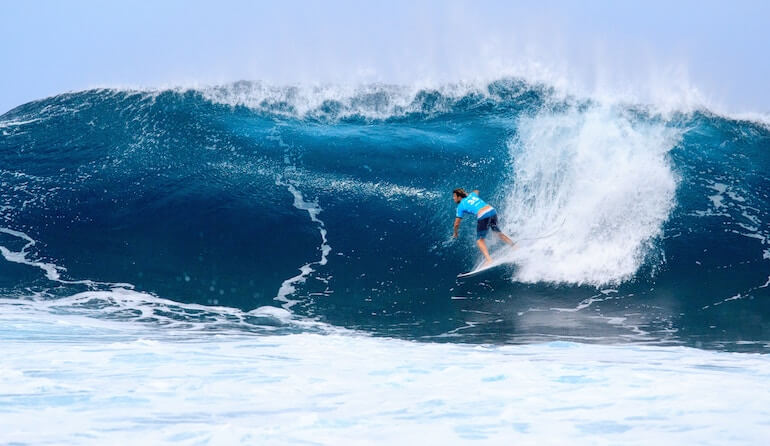
Surfing looks easy
Watching a surfer paddling for a wave, getting that magic push and quickly jumping to their feet, looks effortless.
When you are in the water, you quickly realize you are dealing with a lot of moving elements. The board is not as stable as you imagined, and the water seems rough and unpredictable.
Why surfing is difficult
The reason why it is so hard to learn to surf is that you don’t get much opportunity to practice actual surfing.
You have to catch a wave before you can sharpen those surfing skills.
When you are trying to learn to surf on a shortboard, these obstacles are increased by the small size of the board.
It is much harder to catch a wave on a smaller board, thus there is even less opportunity to actually surf.
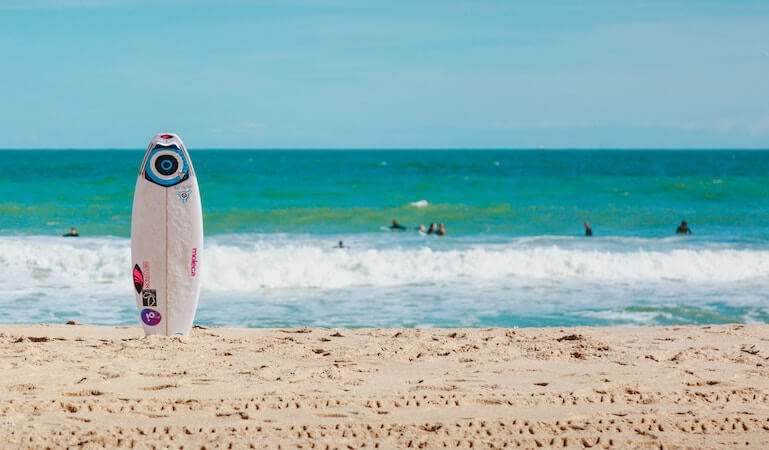
5 Pros with learning to surf on a short board
1. The board is easier to handle
A shortboard does not only look cool, but it’s also easier to bring it to the water. You can carry it under your arm on your stroll to the beach.
If you need to travel to reach the break, this can be near impossible with a huge foamie, but with a shortboard, you can get on the bus or an airplane.
When you are in the water, the shortboard will not be ungainly. Since it is smaller in size, a shortboard is much easier to control when you get smashed by the waves or the white water.
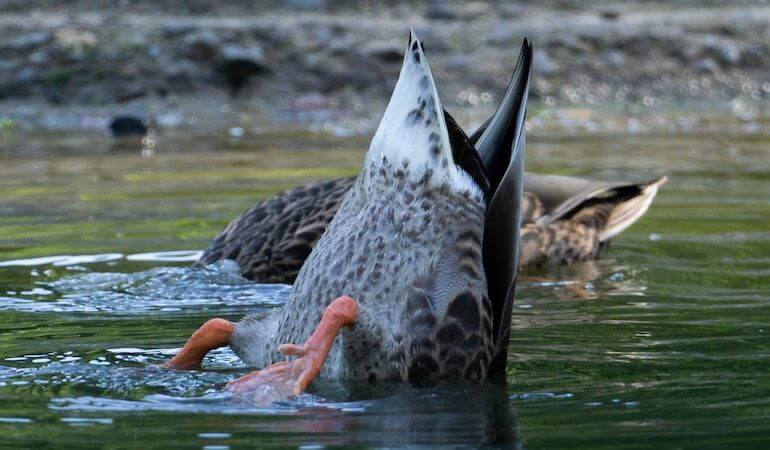
2. You can duck-dive
Yes, the name duck-diving is inspired by the way real ducks quickly can duck into water.
Being able to do this maneuver is the biggest upside with shortboards and the reason why I quickly bought a 6.6 when I decided to become a surfer.
With a shortboard, you can escape the impact of the wave by simply diving under it. The power of the wave only touches the surface, when you dive under the wave, everything is still and peaceful.
If you have good paddle ability you can make it through the whitewater and out to the real break.
3. Your balance will be better
When you finally learn how to surf on your shortboard, your balance will be outstanding.
Without a superb balance, there is no way you are actually riding your board, so you will have no choice, you will develop the ability to not fall off your board.
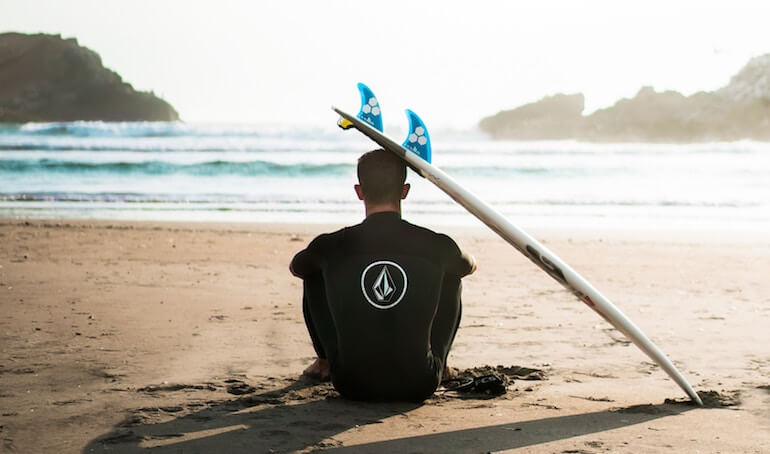
4. Your ability to read the waves will be better
To manage to catch a wave with a shortboard, you need to be in the exact right spot. (Foamies are much more forgiving.)
You need to be where the wave is just about to break.
I’ve seen beginners who, lesson after lesson, get pushed into their waves on their huge beginner boards, that’s not surfing.
In the end, you have to get out in the ocean and make decisions for yourself, you have to learn how to position yourself and decide which waves are worth paddling for.
5. Transitioning will be easier
This is the true temptation of going straight to the shortboard.
Sure, it will be tougher in the beginning, but once you finally get it, there are no training wheels to dismantle.
You are already there. You are a surfer.
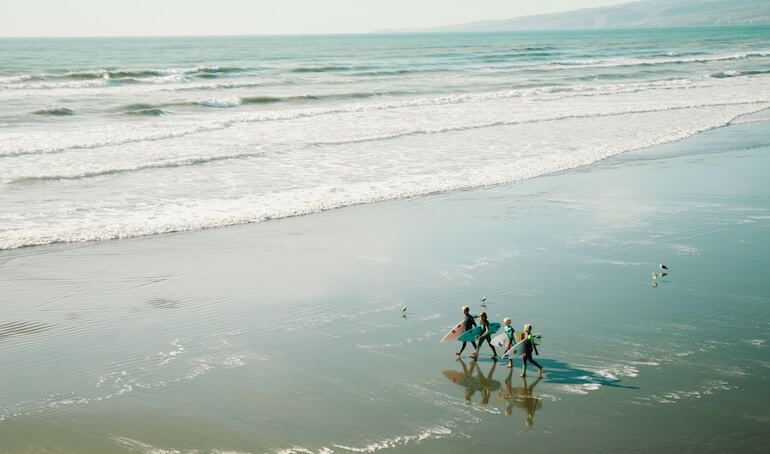
5 Cons with learning to surf on a shortboard
1. You will look like a kook
On the beach, the cool shortboard neatly tucked under your arm, you might look like you know what you are doing.
But once you enter the water, every surfer will be able to tell that you are just a beginner.
A beginner who is clueless enough to take on a shortboard.
If you are not used to it, even laying on a shortboard is a challenge. Your posture will give you away before you even start paddling. Finding your balance on a shortboard is much more difficult since the board is smaller.
2. Other surfers will get annoyed when you constantly miss waves
Once you start going for waves, you will simply not get that magic push. Or you will attempt to jump up, only to fall straight back into the water.
An experienced surfer will undoubtedly start dropping in on you.
When it comes to missed waves, surfers are not chill.
The best way to learn to surf on a shortboard is to find a spot with small but good waves, and not many other surfers around.
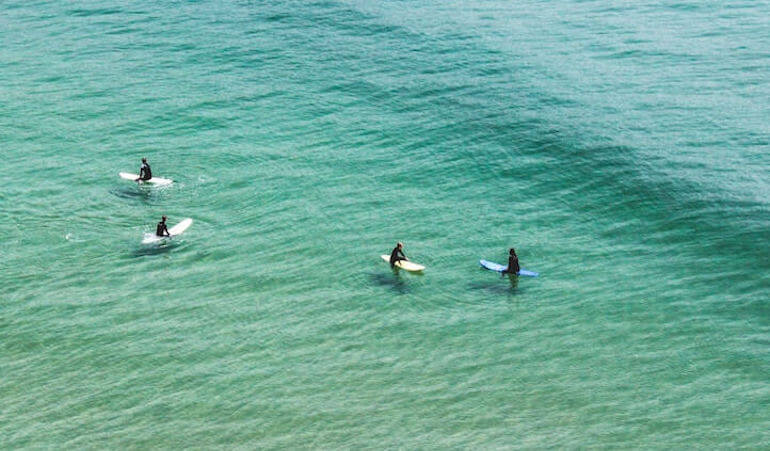
3. You will be catching less waves
The thing with a big board is that catching waves is a hell lot easier.
You don’t have to be in the perfect position, you don’t have to paddle as hard. When you stand on the board, balancing is a lot easier.
So, if you attempt to accomplish all these different components on your beloved shortboard, there are a lot of things that can go wrong.
The result means less time for you to ride actual waves
4. You don’t practice actually surfing
What you will be practicing is reading the ocean and paddling for waves, and duck diving.
All important parts of surfing.
To this day I would say I’m excelling at all of these parts since I spent so much time practicing on them, on my 6.6-foot board. (As an almost beginner.)
My ability to read the ocean is my strongest suit.
But do you really want that to be your strongest side when it comes to surfing?
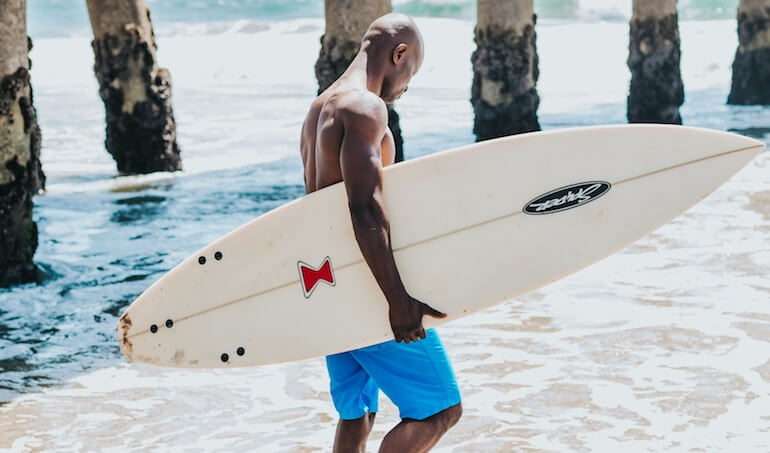
5. The board might hit you
Or to put it more bluntly, the board will absolutely hit you, more than once. You will start to feel like you are in an abusive relationship with the board and you will have the bruises to show for it.
Soft tops are called soft tops because their surface is soft, they can still hit you, but not as deadly as a hard shortboard.
Nowadays there are shortboards that are also soft, so that’s a good transition board when you start to get the hang of catching waves.
Still determined to do it? Let’s take a look at how it is done – 7 top tips to learn to surf on a shortboard
If you want to learn how to surf on a shortboard, you must understand why it is so much harder than just learning on a big soft foam board.
This way you can mitigate many of the biggest obstacles with learning on a shortboard, by practicing like an idiot, (and practicing on the right things.)
1. Choose a board with lots of volume
There is a big difference between different shortboards. Learning to surf on a 5.9-foot shortboard with 29 liters is close to impossible.
But if you choose a bigger board, let’s say between 6.8 and 7.6, you stand a chance.
The volume of the board is also important. The bigger the volume the more floating power. Aim for above 45 liters.
Pick a Mini Malibu
I didn’t learn to surf on a foam board, 20 years ago no one did. (I don’t think foam boards existed, and if they did, they were not widely available.)
The standard practice was to learn on a Mini Malibu.
If you despise foamies, consider going this route. You will learn to surf on a hard board. (Nowadays there are also soft versions of a mini Malibu surfboard.)
Mini Malibu’s are much easier to navigate than a foam board.
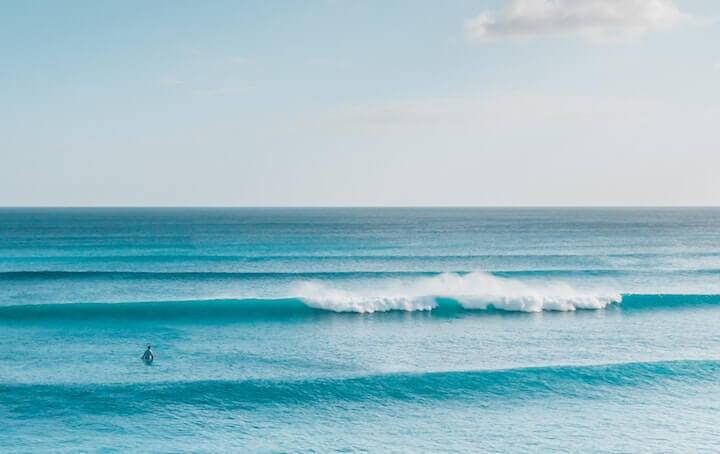
2. Go to the break all the time
The second thing you need to nail when you want to learn to surf on a shortboard is time spent in the water.
You will need to spend at least double the amount compared to someone who is learning on a foam board. Get out there.
3. Learn to read the ocean
Surfing is not only about paddling like a maniac; what you lack in strength you can make up for by having impeccable timing.
Sit on the beach and watch how other surfers place themselves to optimize their possibility of catching the waves.
A good surfer knows where the wave will arrive long before the wave is there.
4. Study the art of surfing
There are a lot of different aspects you need to understand and be able to execute, to become a surfer. Nowadays that information is widely available. Watch YouTube tutorials and read all the guides on how to learn to surf.
I give some tips in this article that I don’t see other people give. But explaining everything you need to know to manage to surf is too much for the scope of this article.
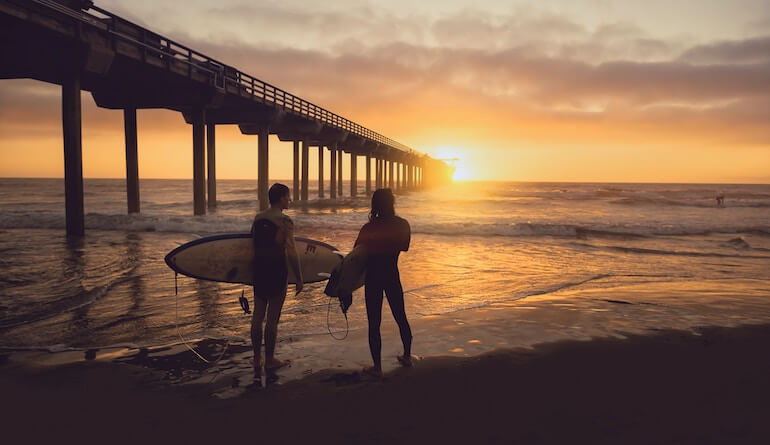
5. Ask other surfers for tips
One of the best ways to learn to surf (shortboard or not) is to ask other surfers for their tips. Ask someone what you are doing wrong, and they will be happy to give you some pointers.
If you are trying to surf on a shortboard, they will most likely tell you to get a bigger board.
6. Practice balancing on the board
When you get onto your shortboard, positioning is everything.
The nose of the board should be above water, but you should not be as far back so that the whole front of the board is peaking up. (A true sign that you are a beginner on the wrong board.)
Laying correct on the board is the difference between catching a wave and missing it.
Keep your body firm
Since I live in a surf paradise, this is the most common mistakes I see among aspiring surfers. You should not lay on the board like a sack of potatoes.
Instead, your muscles should be tense and your whole body should be erect. The stance should be similar to the yoga pose of the cobra.
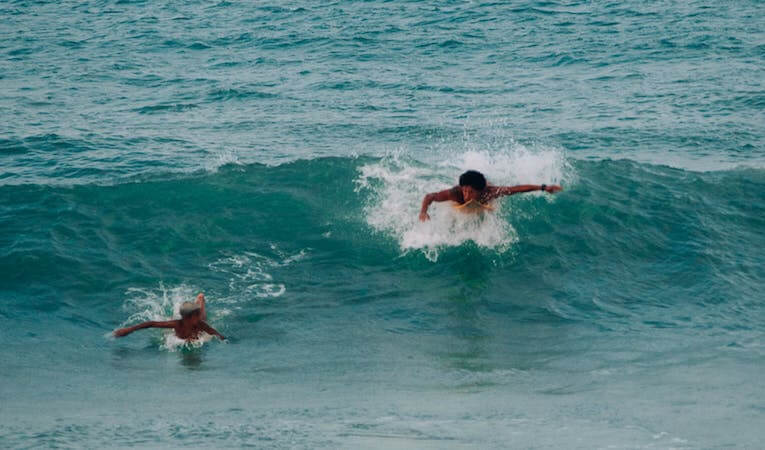
7. Paddle the correct way
The paddle strokes should be with outstretched arms and trail the edge of your board. Your fingers kept together and your hands lightly cupped.
The paddling is very similar to a normal crawl. When you want to catch a wave, you should paddle at 110 percent, most beginners don’t paddle with enough force.
Paddle like your life depends on it
When you learn to surf on a shortboard your paddling needs to be really fucking good.
8. Master the art of Duck diving
The best part of learning to surf on a shortboard is that you can learn to duck dive at the same time you learn to surf.
Within a couple of weeks of consistent surfing, you should be able to avoid big set waves by simply diving under them, together with your board.
Watch a couple of videos to get the theoretical know-how.
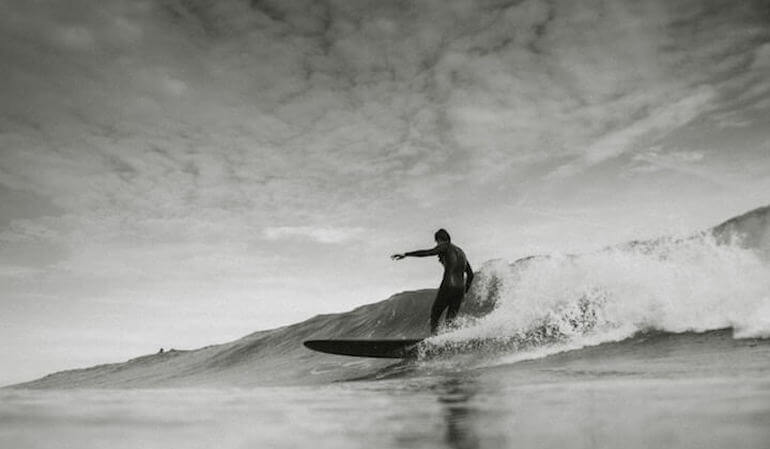
9. Figure out how to catch waves
Most people start surfing in the white water. The practice pop-ups and balancing on the board by catching the broken part of the waves (aka the whitewater.) They happily ride the whitewater all the way to the shore
Green waves
The problem is that the white water (unless you are dealing with big waves) is not strong enough to carry a shortboard with you on top.
You, my friend, need to go straight to the green waves. That’s where shortboards belong.
Decide which wave to try and catch. Start paddling. You should paddle until you feel that magic push of the wave catching you.
Body surfing
Catching a wave on a surfboard is similar to catching a wave without the board, you can develop a feeling for it by body surfing.
10. Popping up
When you feel the wave grabbing you, (admittingly this will be much more elusive on a shortboard), it is time to get to your feet.
This needs to happen in one swift athletic moment. When surfing on a shortboard there is not so much room for errors.
Most surf instructors recommend practicing the pop-up on land.
This is such a crucial moment in riding the wave, so make sure you study many tutorials and also practice a lot, both with the board and without the board.
Your success in your strange mission will come down to how strong your jump-up is.
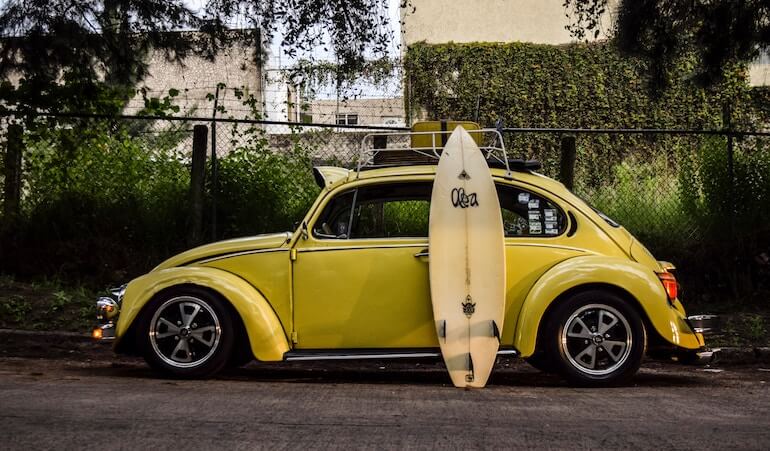
So can you learn to surf on a shortboard?
If you are young, athletic and have daily access to beginner-friendly waves, this strange quest can be fulfilled.
My brother learned to surf on a 6.6.
So did I (more or less.) Mostly because I wanted to navigate bigger waves and the crowd with the smoothness of something smaller. I was also traveling around with the board. I did get lots of tips from the guys I was traveling with.
You need a true passion for surfing, but it can be done.



